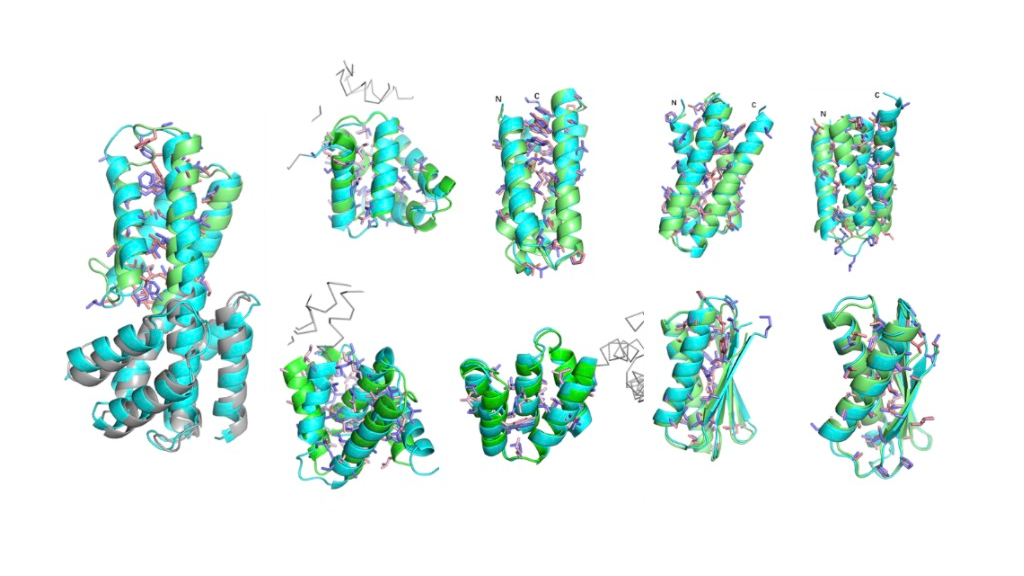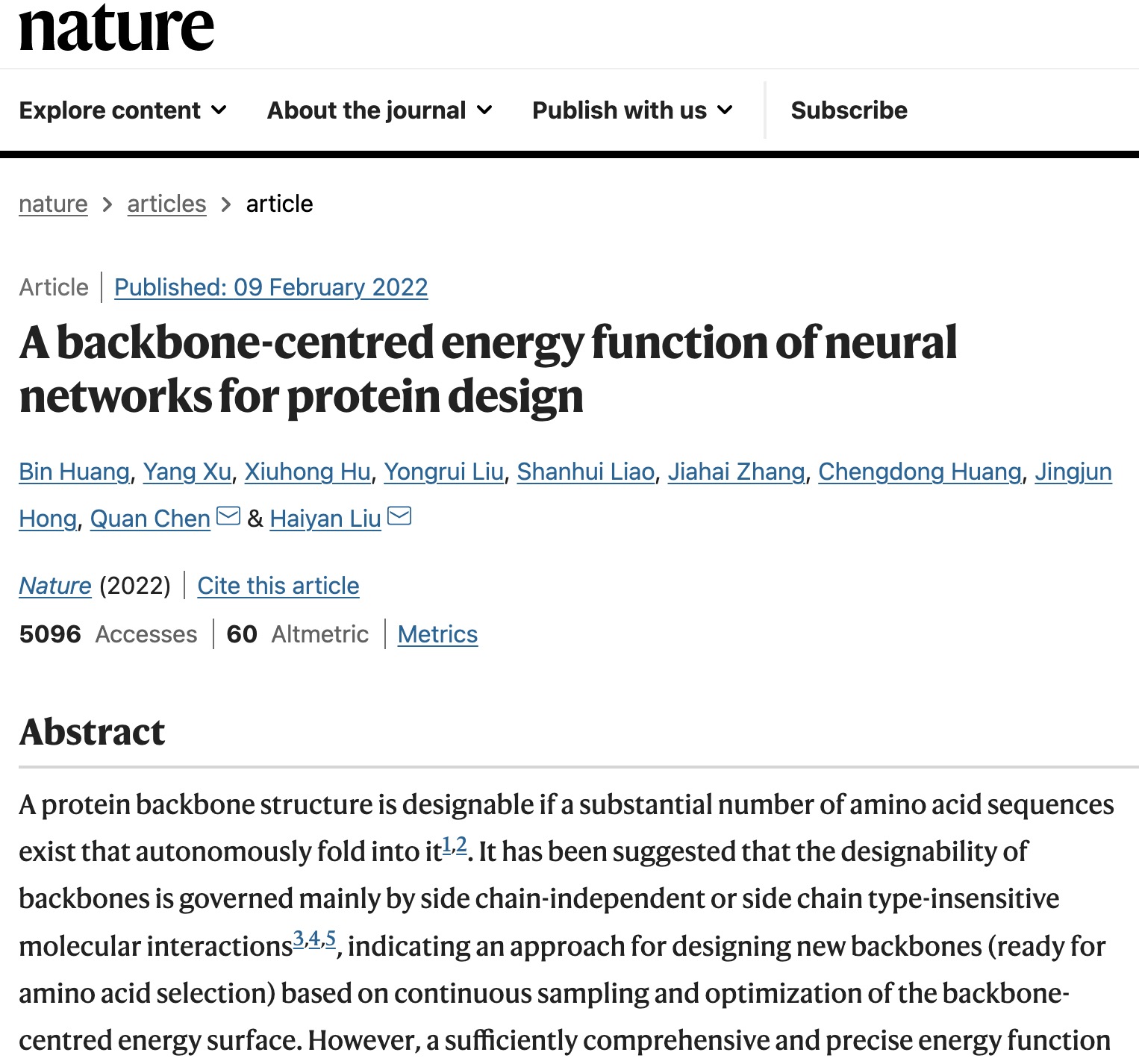
High-resolution crystal structure of the de novo protein (sky blue) compared with a design model (green). /USTC
High-resolution crystal structure of the de novo protein (sky blue) compared with a design model (green). /USTC
Chinese scientists have created a new de novo protein design method named SCUBA (Side Chain-Unknown Backbone Arrangement), constituting an innovation of the bottom technology of protein design.
The research team, led by Professor Liu Haiyan and Professor Chen Quan from the University of Science and Technology of China (USTC), generated SCUBA by adopting a data-driven strategy, and laid a solid foundation for the future design of functional proteins for industrial catalysis, biomaterials and biomedical uses. The research paper was published in the scientific journal Nature on February 10 (BJT).

A screenshot of Chinese scientists' paper "A backbone-centred energy function of neural networks for protein design" published in the journal Nature, February 10, 2022 (BJT). /Nature
A screenshot of Chinese scientists' paper "A backbone-centred energy function of neural networks for protein design" published in the journal Nature, February 10, 2022 (BJT). /Nature
Proteins are the foundation of life and the main executors of cellular functions, with their structures and functions determined by their amino acid sequences.
Currently, proteins of stable three-dimensional structures are almost all natural ones, whose amino acid sequences are results of long-time natural evolution.
When structures and functions of natural proteins fail to fulfill industrial or biomedical needs, proteins must be designed to provide the missing functions.
(With input from Xinhua)

